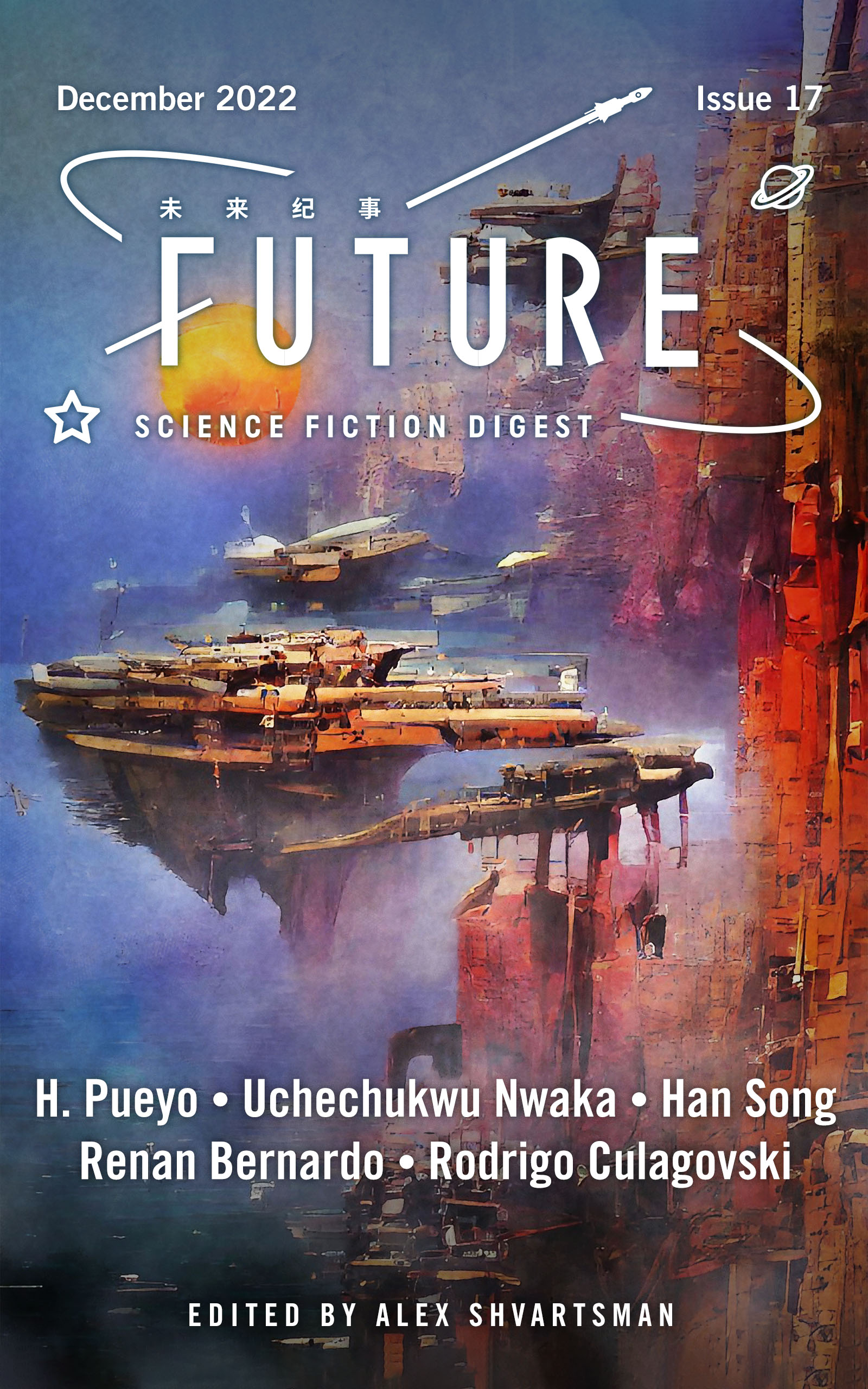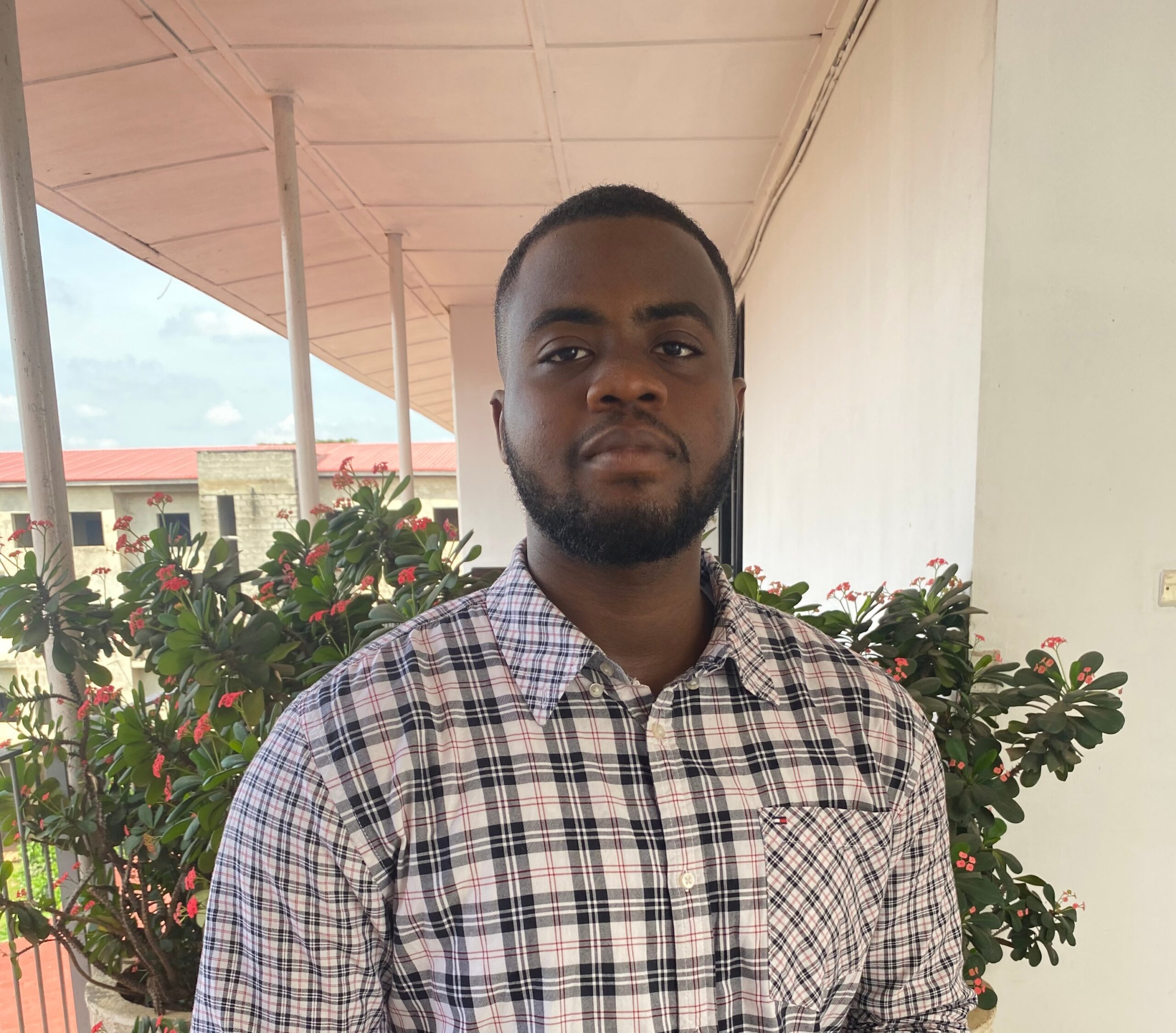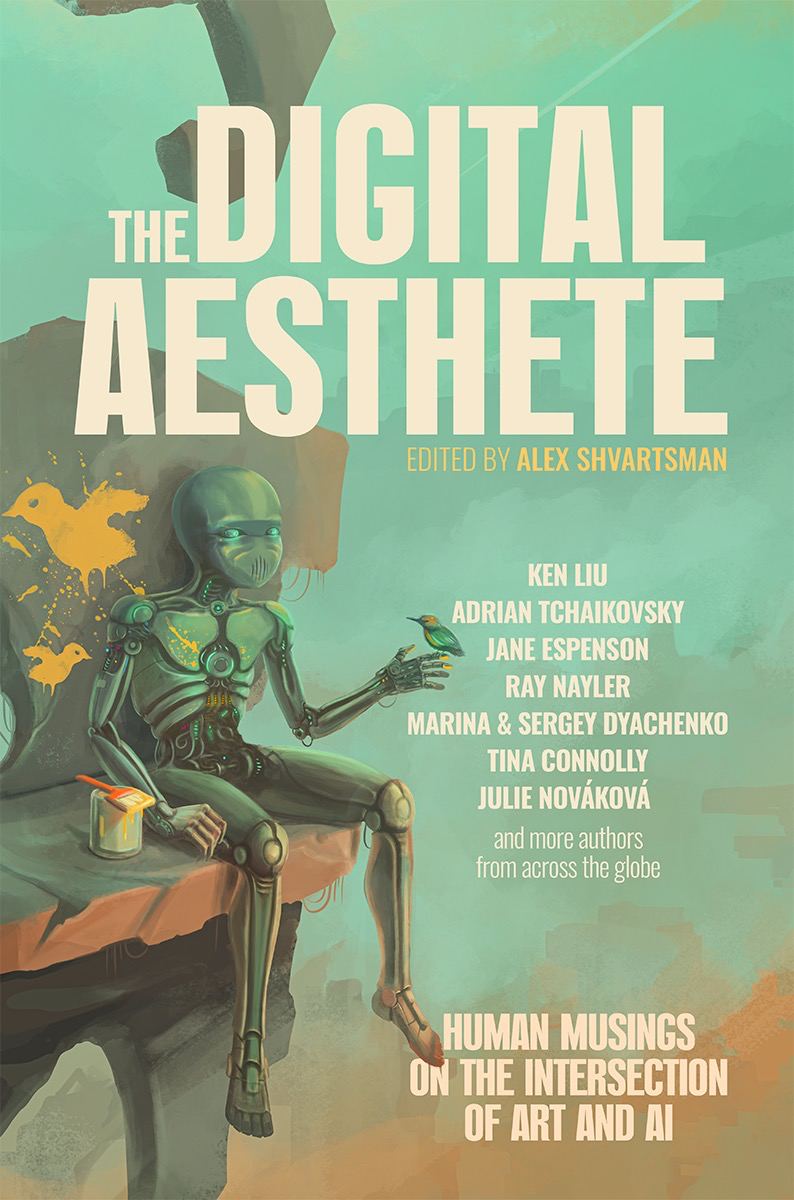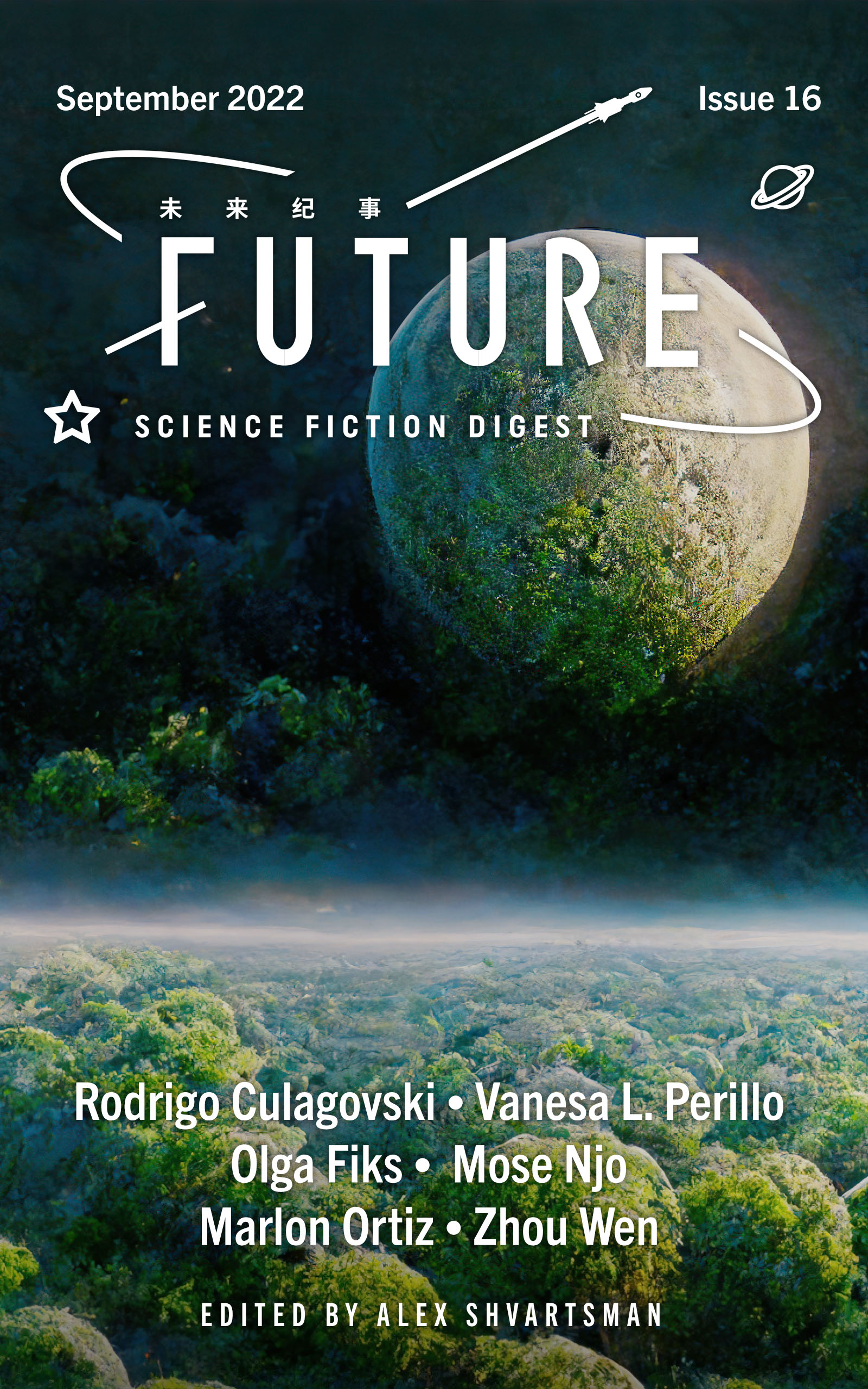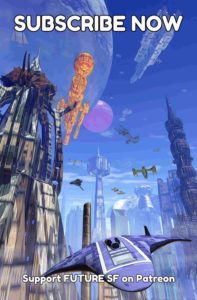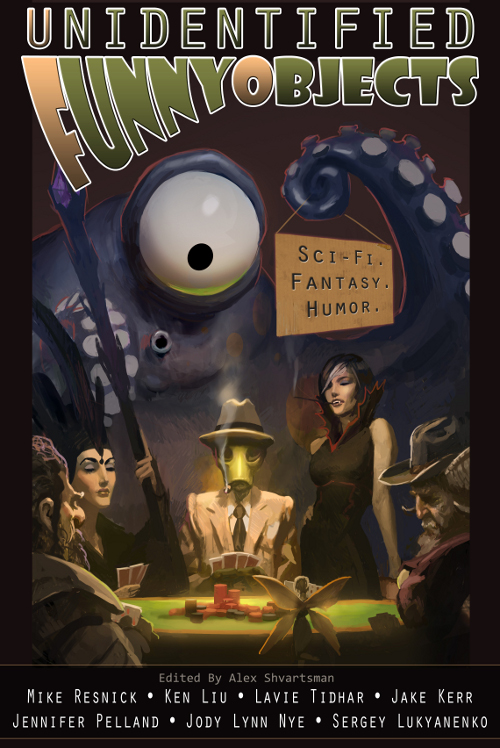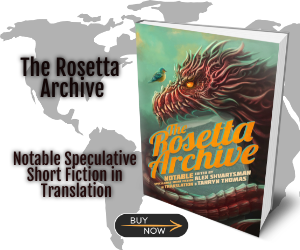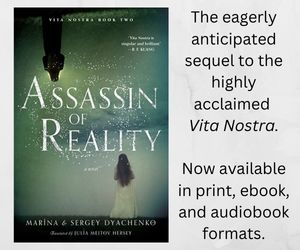Item One: Glaciator.
This is one of my least favorite inventions, and that’s only because the device is so fickle. At first I thought it was pretty cool, being able to design the coolant, ignition and explosion mechanisms as interlinked chambers contained within a fist-sized steel sphere. Instead, I got a machine that constantly absorbs atmospheric heat once activated. There’s no real time lag between the energy conversion from heat to cold and the next heat storage cycle. This device is a failure.
It’s a wonder why Kehinde likes it so much though.
We pick the locking mechanism to Prof’s secret lab at Challenge City. By we, I actually mean Kehinde, because she’s really good at the manual—technical—stuff. We don’t let the doors fully slide open before my twin activates the glaciator sphere with a click and tosses it into the lab complex.
“You might want to take a few steps back,” she says.
“Just how much heat did you store in it?” I ask, partly out of curiosity as to how much heat the device could actually convert before packing up. Mostly I’m asking because I don’t like the idea of my sister tinkering with something that could blow up all of her limbs on a whim.
A muffled explosion cuts her next sentence short, followed by a bite of freezing-cold air. Even the door freezes on its automated pulleys, and a thin web of ice crawls on the concrete pavement, stopping short a few inches from the tips of my boots.
Kehinde cocks her head at me slightly in amusement before squeezing her way into the dark space. I pull out my torch and follow her in. Under the yellow beam, my breath escapes my lips in thick clouds of vapor. The walls have been covered completely in a fine sheet of hard ice, all the way to the ceiling, diffracting the beams of my torch in phantasmal arcs.
Now that’s not something you see every day.
The light reflects over every frozen surface until it falls on a bulge of ice shards that resemble the unfurling of flower petals: the epicenter. The glaciator sits innocuously within, its gauge ticking nonchalantly. Already storing up heat for its next use.
Kehinde picks it up.
“Better be careful,” I tell her. “You know it spontaneously ignites once it crosses the half line—”
“Um, Taiwo,” Kehinde interrupts me, her eyes focused on something behind me. “Is that what I think it is?”
I turn too, my torchlight following the course of my motion. Right at the entrance to the vault room, in a half-motion reaction to the intruding glaciator, is an Iron Human.
Frozen solid.
“Bloody hell.”
Item Two: Auto-member.
Ever had a project that just got out of hand?
The former auto-member project describes that perrrr-fectly.
So I happened to start working with—under, I meant under—Prof. at a really bad time. The worst, really. We were on the losing side of the Civil War, and there were no more “able-bodied youths” to spare for conscription. Also, the ones that did survive the frontlines only did so with at least one limb missing. I was experimenting with auto-member technology at the time, and troops were in high demand. Half a loaf was better than nothing.
See where this is going?
Mere prosthetics wouldn’t cut it. The Army needed us—Prof. actually, I don’t work for the Army—to make something that let their troops pick up a weapon even after losing a limb or two. Or three! Said they were paying too much for “fancy looking arms that have no functionality.”
“It’ll take decades before I can synchronize living tissue and auto-member,” I told Prof.
“I might have a way,” he replied. “I’ve been experimenting with a certain gas technology for some time now. I believe it might help.”
I should have run then.
Now I mutter a string of curses under my breath. The Iron Human is almost seven feet tall, and the auto-member on his limbs looks well rounded and properly welded. A far cry from the entry-level prosthetics I made for the military two years ago.
“Stop drooling, Taiwo,” Kehinde hisses beside me. There’s this edge to her voice, and for good reason too. I snap out of it. Prof. is the enemy now.
“We have work to do,” she continues. “How do we get into the vault?”
I brandish a few canisters from my utility bag. “The contents of the can will eat the vault’s door through the ice. The Iron Human’s heating systems will free it from the ice very soon, meaning we have to move faster than we planned.”
Kehinde takes a canister from my hand. “Hypothetically speaking, will the contents of this canister work against the Iron Human’s auto-member?”
“Sure. But then we wouldn’t have enough to get through the vault door and get you the new Heart. Besides, Iron Humans are people too. Why would we want to melt a living man with acid?”
Kehinde stays silent.
Item Three: Iridite Heart.
This one’s not mine. At all. It’s Prof’s invention through and through. He even patented it.
The incandescent beam of my torchlight falls upon a storage cylinder inside the vault. When I open it, tiny gears click silently and the cooling system lets out a slight hiss.
“Is that it?” Kehinde whispers behind me, almost reverently.
I nod. The Iridite Heart is a spherical core riddled with a hundred tiny spark plugs on its surface. The device looks like a porcupine, but less stabby and with tiny streaks of static electricity licking over its numerous plugs. The charged Iridescence within it gives off a purple glow that casts a halo around the both of us.
“What’s the secret to this one?” Kehinde asks. “How does the core pack so much energy?”
“Self-contained renewable energy. The Iridite Heart utilizes the high output kinetic energy of the molecules of Iridescence, amplified by the pressurized walls of the Heart, and converts that into electricity. Iridescence being an artificially synthesized, non-radioactive substance, possesses an unprecedented high molecular stability in varying physical conditions, so the molecules can go on and on, producing electricity for as long as a century. Theoretically.”
Kehinde stalls for a few seconds. “Uh … okay.” I’ve clearly lost her. “Can we go now?”
I shake my head knowingly as I seal the cylinder and heave it into my bag. In a split heartbeat, something flashes past my torch’s beam. Apprehension hits me instantly as Kehinde jumps in front of me, shielding me from an incoming blow from the Iron Human’s fist.
Both of us fall to the floor, rolling.
Somehow, the discarded torch casts an inverse spotlight on the Iron Human. The pistons on his hydraulic steel limbs hiss dangerously, ejecting steam and kicking the temperature in the room up a few degrees. His eyes are glowing red in the semi-darkness, and I can see the faint glow of his Iridite Heart beneath his white top.
The section of the shelves where his fist connected splinters into pieces and falls to the ground.
Yeah, this guy is bad news.
Item Four: Iridescence.
Prof’s idea to take auto-member to the next level was a nerve gas.
In a nutshell, Iridescence could alter nervous plasticity into literal malleability, improving conductance such that it seemed like the nerves were becoming organometallic circuitry that connected to an external interface—the auto-member.
It was groundbreaking. With this I thought, “Oh, war casualties should decrease. Injured veterans should be able to continue their lives without so much trauma,” and a whole bunch of ideals that Prof. and the Army were not interested in pursuing.
The Army was impressed for as long as it took for them to realize that the soldiers they equipped with new arms and sent back to the front lines were the same ones who had lost those arms to the opposition in the first place. Now they wanted better. They had auto-member and Iridescence already. All that was left was something that would completely crush the opposition. Something more than just human.
And Prof. wanted more too.
This was around the time Kehinde decided to visit me at Challenge City.
Item Five: Piston-blade.
Kehinde rises to her feet. She literally has to crane her neck to look the Iron Human in the face. I almost cower, because his biceps ripple with red hot folds of steel auto-member and whoever constructed his face threw aesthetics out the window, opting for straight-up terrifying. There’s a long hold-your-breath moment that passes between the two of them before the Iron Human’s hand strikes downward like lightning.
Kehinde dodges, pulling a sleek tube from her belt hook.
She jabs.
An explosion of hot air follows the blade’s cannon-like extrusion from the hilt. It lodges into the Iron Human’s side and he groans—a strange mechanical howl. He swings his other hand toward Kehinde’s face.
“Kehinde! Watch out!”
But my twin’s faster. There’s a cord on the hilt which she pulls and the sword hums into life, creating a subsonic resonance on the blade that can cut through concrete. With that she wrenches the piston-blade free of the Iron Human’s torso in time to parry his fist. Then again and again.
You guessed it. The piston-blade is my proudest invention.
“Run, Taiwo!” Kehinde yells. “Run!”
I grab the Iridite Heart and make a run for it.
Item Six: Iron Human.
“Think about all the limits of a human body,” Prof. said in this same lab two years ago. His eyebrows were scrunched together in total concentration. “Miss Taiwo, with your auto-member technology and my Iridescence gas, we can bring about the next stage of human evolution.”
“We already have the auto-member project, don’t we?” I replied with only half a heart as I gathered some of my papers before leaving to catch the train that arrived at the city’s terminal in about half an hour. In truth, it’d been a long time since I’d seen my sister, and I wasn’t too interested in indulging Prof’s whims on my day off.
“What if we made a full body machine, auto-member and all?”
“They already have the Ọrunmila tanks at the front lines, sir.” I sighed in mild exasperation. Conversations with Prof. tended to get long winded.
“I know, but those are just bulky steam machines. They have zero finesse. I’m talking about a fully metallic human being. One with all the perks of having a body unfettered by the limits of soft living tissue.”
I froze in my tracks. “What?”
“All we need to do is design a body. We’ve seen just how Iridescence can manipulate nervous tissue to the point of inducing a form of fossil-like preservation. And its compatibility with mechanical circuits proves that new neural pathways can be created even when metallized.”
I was getting a bad feeling. “But this is all theory, right?”
Prof. chuckled, then handed me a bunch of papers. “I’ve run tests on mice and some higher mammals, including chimps. You see the effect of the Iridescence on the brain? It preserves the functionality while making it compatible for a machine transplant!”
My heart was pounding furiously in my chest now. “Sir, with all due respect, these are just animal tests. You can’t possibly be thinking of doing this to a living human.”
“I want you to open your mind, Miss Taiwo. If we can complete this model, we’ll have taken one step closer to God!”
The final page of his papers had the schematic diagrams of humanoid auto-member parts, all put together as one. I shook my head. “Prof., I’m going to miss my train. But I promise we’ll talk more about this when I get back. Please don’t start anything yet.”
“Of course not. I still have a power core to think about and a whole lot of other kinks to iron out. Enjoy your weekend, Miss Taiwo.”
I should have noticed the schematics had feminine modifications.
Item Seven: Kehinde.
I run. Fast.
The clashes of Kehinde’s piston-blade and the Iron Human’s fist ring through the lab. We’re out of time. Prof’s military cronies will be arriving soon, meaning more Iron Humans.
Shit!
An explosion of cold air behind me almost knocks me off my feet. I stagger and turn, my eyes searching the darkness with frantic prayer. The sound of approaching mechanical footsteps sends jolts through my heart. I clutch the strap of my bag tighter.
Kehinde appears, glaciator in one frozen hand and piston-blade in the other. She crumples to the frozen floor without grace.
“Kehinde!”
I reach her side in an instant. Her auto-member limbs are completely corroded, and she’s bleeding circuitry here and there. My heart shatters and the pieces choke the words in my throat.
“I’m fine,” she croaks, but even the modifications I made on her voice output are broken. Now she sounds like a very tired record player. “You should see the other guy.”
“I’m sorry,” I say. “I’m so, so sorry.”
“Never mind that. We need to get out of here. Is the Iridite Heart intact?”
I nod furiously. It would have all been for nothing if I’d lost the Heart. I was foolish for thinking I could show Kehinde where I worked, all those years ago. I’d never expected Prof. to attack us, then use the Iridescence on my own sister just to prove his point. Never in my wildest dreams had I envisioned my sister becoming a machine.
Kehinde lifts her good arm, carefully using a finger to wipe the tears that had started running down my face. “Don’t cry, Taiwo. You’ve got a better body for me right? That’s why we got the Heart. We’ll be okay.”
I sniff, long and loud. The Army won the Civil War with Prof’s stupid Iron Human technology. Technology he perfected using my sister as a final lab rat. While Kehinde battled depression and a failed suicide attempt, the Army celebrated a Civil War victory where they “completely crushed the opposition,” as they liked to say. Yet nobody was willing to talk about the atrocities they’d committed in the process. About how dying soldiers were pumped with Iridescence to preserve their CNS before transplanting them into the Iron Human skeletons. When they started running mad with trauma, Prof. tainted the Iridescence to make the soldiers submit their wills … and humanity. Soldiers that asked no questions and obeyed all commands. My technology, warped in the hands of madmen.
All’s well that ends well in war, no? All hail the New Era.
“I’ll make things right.” I nod to Kehinde, wrapping her arm over my shoulders. “I promise I will.”
It’s my mantra as we drag ourselves out of the lab and into the humid night.
